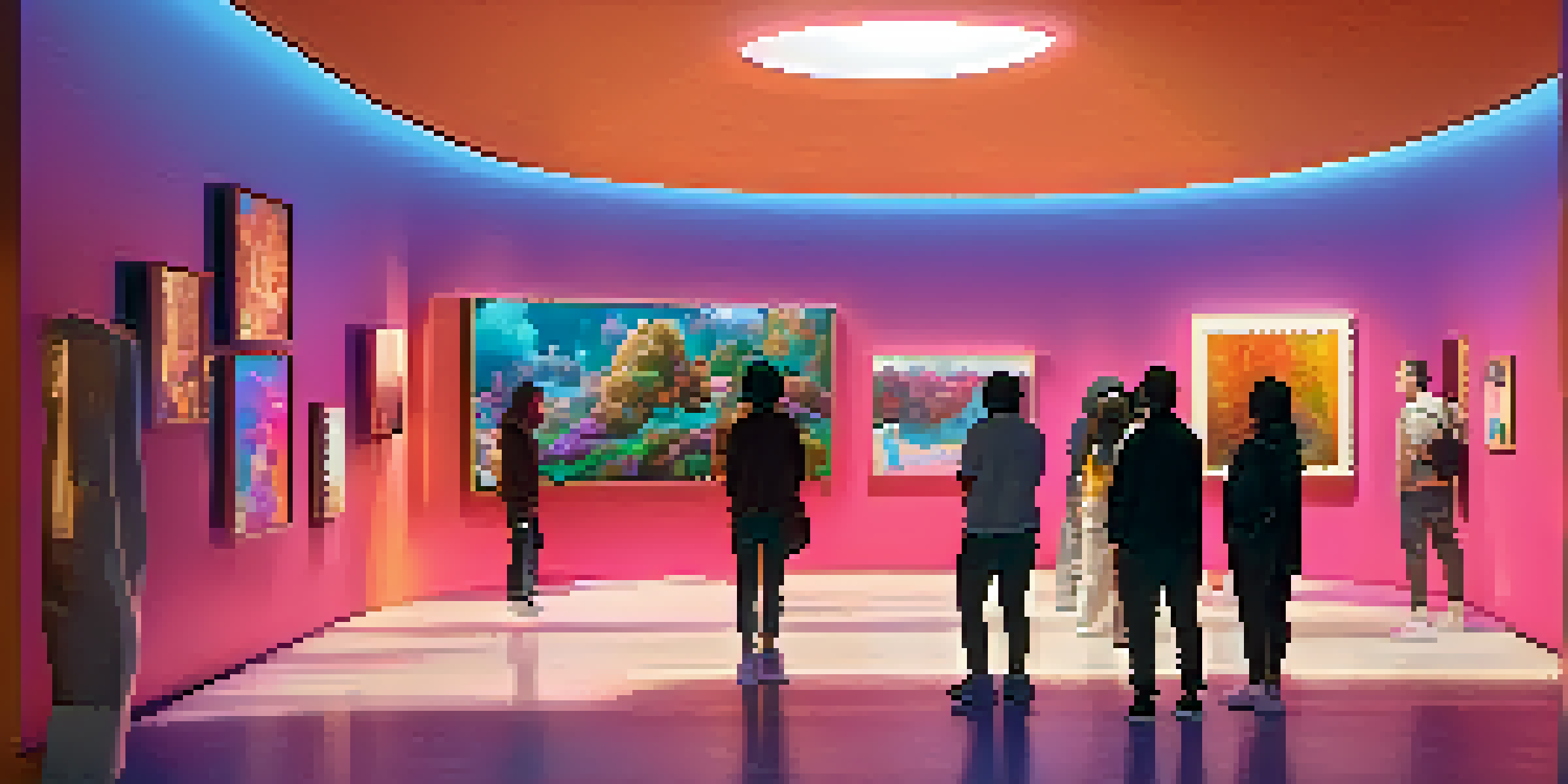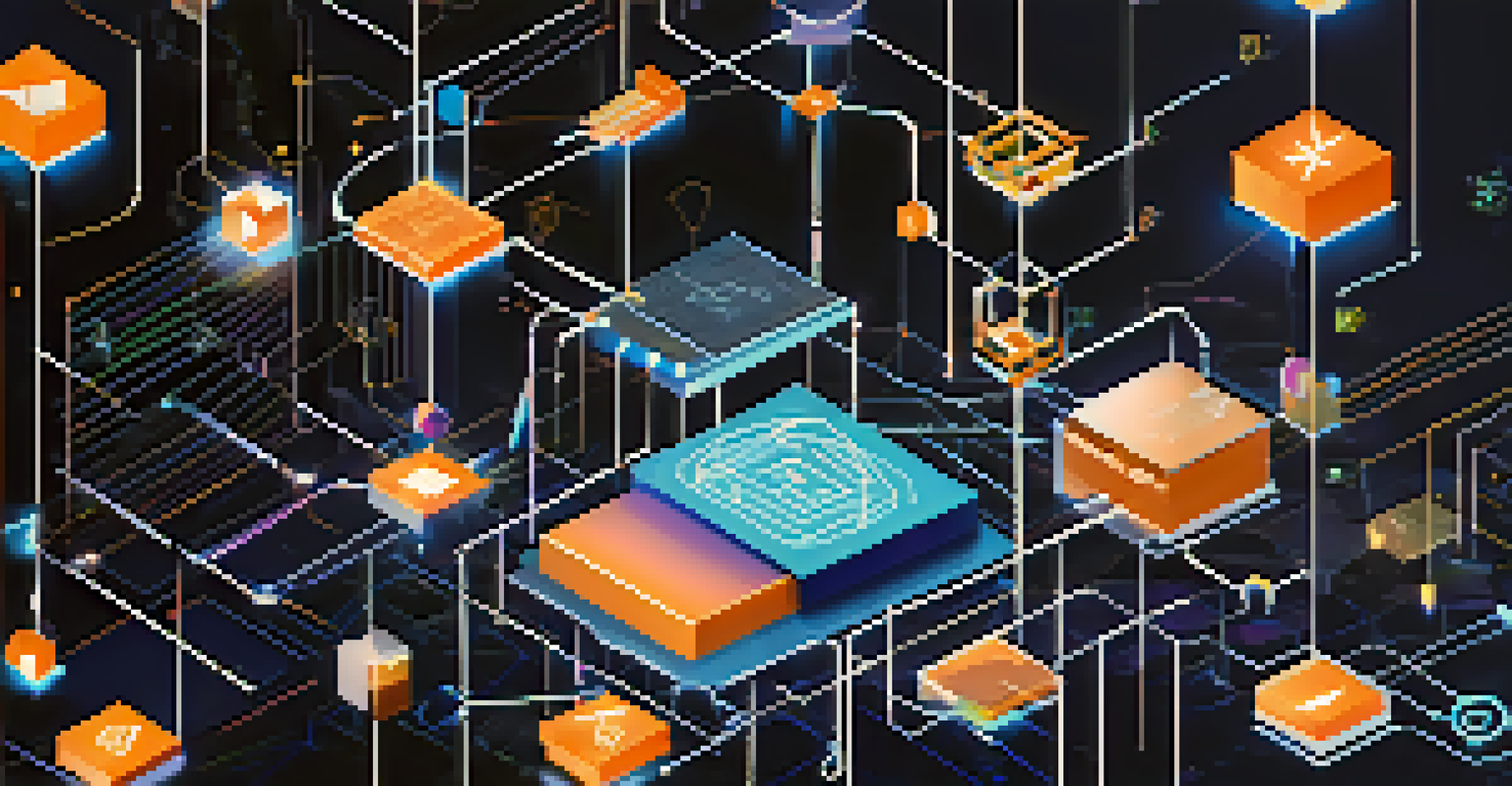Licensing Issues: NFTs and Intellectual Property Considerations

Understanding NFTs and Their Rise in Popularity
Non-fungible tokens (NFTs) have taken the digital world by storm, providing unique digital ownership that wasn't possible before. Unlike cryptocurrencies, NFTs are one-of-a-kind assets that represent ownership of a specific item, whether it's digital art, music, or even virtual real estate. Their rise can be attributed to the growing demand for digital authenticity and provenance, appealing to collectors and creators alike.
Intellectual property is the oil of the 21st century.
For many artists and content creators, NFTs offer a new revenue stream that empowers them to monetize their work directly. This shift in ownership from traditional galleries and platforms to individual creators has sparked a revolution in how art and content are valued. With platforms like OpenSea and Rarible, anyone can buy, sell, or trade NFTs with ease, making it accessible to a broader audience.
However, as the NFT market expands, so do the complexities surrounding intellectual property rights. The intersection of NFTs and copyright law is still being navigated, leading to potential misunderstandings about what ownership truly entails when purchasing an NFT.
The Basics of Intellectual Property Rights
Intellectual property (IP) refers to creations of the mind, encompassing inventions, literary and artistic works, designs, symbols, names, and images used in commerce. Understanding IP rights is crucial for anyone involved in creating or trading NFTs, as these rights protect the original creator's work from unauthorized use. There are various forms of IP, including copyrights, trademarks, and patents, each serving different purposes.

Copyright is perhaps the most relevant form of IP for NFTs, as it grants creators exclusive rights to reproduce, distribute, and display their work. When an artist creates an NFT, they retain the copyright unless they explicitly transfer it to the buyer. This means that while buyers can own the NFT itself, they may not have the right to use the underlying artwork commercially without permission.
NFTs Redefine Digital Ownership
Non-fungible tokens provide unique digital ownership, enabling artists to monetize their work directly and appeal to a broader audience.
Misunderstandings about IP can lead to disputes and legal challenges, making it essential for both creators and buyers to be aware of their rights and responsibilities. A clear understanding can help prevent potential conflicts and foster a more respectful and equitable NFT marketplace.
The Role of Licensing in the NFT Marketplace
Licensing is a critical aspect of the NFT ecosystem, enabling creators to define how their work can be used by others. By establishing clear licensing agreements, artists can specify whether buyers can reproduce, modify, or display their NFTs in different contexts. This clarity helps protect the creator's interests while providing buyers with a clear understanding of what they can and cannot do with their newly acquired asset.
Art is not a thing; it is a way.
Different types of licenses exist, from exclusive to non-exclusive agreements, allowing flexibility based on the creator's goals. For example, an artist might sell an NFT with a non-exclusive license, allowing multiple buyers to own the same rights. Conversely, an exclusive license may appeal to collectors seeking unique rights to a particular work, further driving the NFT's value.
As the NFT market matures, the importance of clear licensing agreements cannot be overstated. They serve not only to protect creators but also to foster trust among buyers, ensuring that everyone involved understands their rights and obligations.
Challenges in Enforcing Intellectual Property Rights
One of the main challenges in the NFT space is enforcing intellectual property rights, especially given the decentralized nature of blockchain technology. Unlike traditional art markets, which have established legal frameworks, the NFT market is still developing, leading to ambiguities around IP enforcement. This lack of a clear regulatory framework can make it difficult for artists to protect their work from unauthorized use.
When an NFT is sold, the ownership of the token is transferred, but the copyright may not be. This often leads to confusion among buyers who assume they have full rights to the underlying work. Without clear communication and licensing agreements, misunderstandings can arise, resulting in disputes that can be hard to resolve in a decentralized environment.
Intellectual Property is Crucial
Understanding intellectual property rights is essential for both creators and buyers in the NFT space to avoid disputes and protect original works.
As the NFT landscape evolves, it is essential for creators and buyers to stay informed about their rights and the mechanisms available for enforcing them. Engaging with legal experts who understand digital assets can help mitigate risks and ensure that IP rights are respected.
The Importance of Clear Communication in Licensing
Clear communication is vital in avoiding misunderstandings about licensing agreements in the NFT space. Creators should strive to articulate the terms of use associated with their NFTs, such as whether buyers can display the work publicly or use it in commercial projects. This transparency helps set proper expectations for buyers and can prevent potential legal issues down the road.
Moreover, using accessible language when explaining licensing terms can make them more understandable for a broader audience. Avoiding legal jargon and instead opting for straightforward explanations can empower both creators and buyers to make informed decisions. This approach fosters a more inclusive environment, encouraging more people to engage with NFTs.
By promoting open dialogue about licensing and IP rights, the NFT community can cultivate a culture of respect and understanding. This not only benefits individual creators but also strengthens the overall ecosystem, paving the way for sustainable growth.
Navigating Copyright Infringements in NFTs
Copyright infringement can be a significant risk in the NFT space, particularly when it comes to artists' original works. Unauthorized reproduction or sale of an artist's work as an NFT can lead to serious legal consequences. For creators, it's crucial to monitor the marketplace for potential infringements and to take action when necessary, whether through cease-and-desist letters or legal proceedings.
Platforms that host NFT sales also have a responsibility to protect IP rights by implementing measures to detect and remove infringing content. By establishing clear reporting mechanisms and policies, these platforms can help safeguard creators' rights and maintain trust within the marketplace. This proactive approach benefits not only artists but also buyers who want to invest in legitimate works.
Licensing Clarifies User Rights
Clear licensing agreements empower creators to define how their NFTs can be used, fostering trust and understanding in the marketplace.
Additionally, educating the community about copyright issues can play a crucial role in reducing infringements. When artists and buyers understand the importance of respecting intellectual property, it contributes to a healthier and more ethical NFT environment.
Future Considerations for NFTs and Intellectual Property
The future of NFTs and intellectual property is still unfolding, and several factors will shape its development. As the popularity of NFTs continues to grow, we can expect to see more robust legal frameworks emerge to address the unique challenges posed by this digital asset. This evolution will likely include clearer regulations around licensing, copyright, and enforcement mechanisms.
Moreover, as technology advances, new tools and platforms may arise to help creators manage their IP rights more effectively. For instance, blockchain technology itself could be leveraged to create more transparent and tamper-proof licensing agreements, simplifying the process for both creators and buyers.

Ultimately, the relationship between NFTs and intellectual property is complex but ripe with opportunity. By staying informed and engaged, creators and buyers can navigate this evolving landscape, ensuring that the rights of artists are respected while enjoying the benefits of digital ownership.